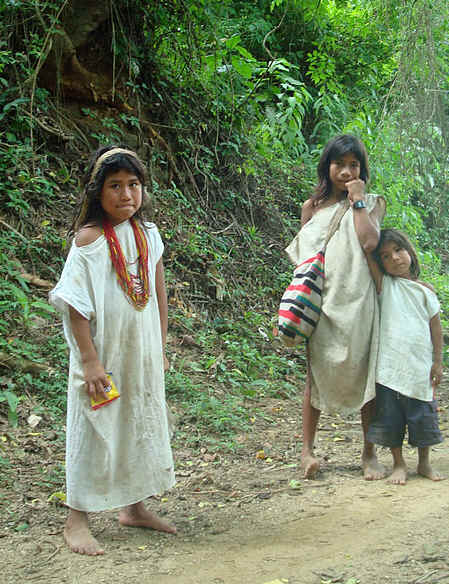The
Kogui, Arhuaco and Wiwa peoples, direct descendants of the Tairona people, are
the indigenous groups that currently inhabit the Sierra Nevada de Santa Marta, a
great mountainous massif that rises up above the Colombian Atlantic coast.
These
indigenous communities believe that the Sierra Nevada de Santa Marta is the
place of creation and the heart of the world, where all things were born, and is
therefore a sacred place, and the fate of the world depends upon the care given
to it.
For
this indigenous community weaving is an act of creation, a way to deploy one’s
thoughts, an art that maintains and reinforces personal, family and social
relationships. Weaving is a task used to represent elements of their daily
lives, express their mythological thought, remember the past, and honor their
values and cultural identities.
The
Kogui creation myth tells: ‘Since the beginning of the world, the Universal
Mother organized the task of weaving. She gave the loom to men, and the weaving
of bags to women. Thus, men and women would help each other. When men and women
weave they are talking to the Universal Mother. Weavers travel, through the
yarn, the history of the world’s creation. They recreate their origin and
remember their laws and vital principles. The

Kogui
children, Tayrona National Park, La Sierra Nevada de Santa Marta
weaver
walks through the world through the yarn. Men walk through it up and down and
left to right, along the length and breadth of the loom. Women walk through it
in a spiral movement, along the cylindrical body of the bag. With yarn, the
“mama” (shaman) ensures the life of new born babies and keeps away bad
spirits, yarn is used to take measurements for building houses and temples, yarn
is used to tie up the bodies of the deceased and their spirit is safeguarded so
they may live on in the memory. Yarn represents the union between the human and
the divine, the earthly and the eternal. Yarn is the umbilical cord that joins
the Universal Mother with humanity.’
The
Universal Mother, only possessor of the art of spinning and weaving, took her
massive spindle and drove it vertically into the newly created earth.
She
put it in the center of the Sierra Nevada, right through its highest peak, and
said: “This is ‘Kalvasankua’, the central pillar of the world!”
And saying this she took a strand of cotton thread from the tip of spindle and, with its end, drew a circle around the vertical axis, declaring: “This will be the land of my children!”